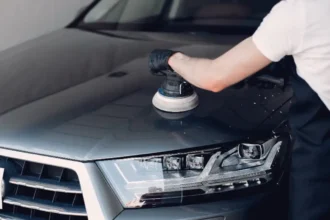If your car’s temperature gauge is rising or you notice steam coming from the engine, the issue may be as simple as a low coolant level. Properly checking and maintaining your car’s coolant level is essential for ensuring optimal performance and preventing costly repairs. Coolant, also known as antifreeze, plays a crucial role in regulating the engine’s temperature, whether you’re driving in the scorching heat of summer or the freezing cold of winter.
This guide will walk you through how to check your car’s coolant level, why it’s important, and how to protect your engine from damage.
Why Coolant Level Matters in Car Maintenance
Coolant is essential for keeping your engine running at an optimal temperature. It circulates through the engine, absorbing heat and preventing it from overheating. Over time, coolant levels can drop due to leaks, evaporation, or engine use, which can cause your engine to overheat, leading to expensive repairs.
How to Check Your Car’s Coolant Level (Step-by-Step)

- Ensure the Engine is Cool: Safety first! Always check the coolant level when the engine is cold. Checking the coolant in a hot engine can result in burns, as hot coolant and steam may shoot out when you open the cap.
- Locate the Coolant Reservoir: Most cars have a translucent plastic coolant reservoir located near the radiator. This container is often labeled “engine coolant” or “antifreeze.”
- Examine the Minimum and Maximum Markings: The reservoir will have markings that indicate the minimum and maximum coolant levels. If the coolant is below the minimum line, you’ll need to add more.
- Check the Coolant Color: The color of coolant can vary (green, orange, pink, or yellow), depending on the type. If the coolant appears rusty or has debris, it may be time to flush and replace it.
- Top Off if Necessary: If your coolant is low, carefully open the cap (again, only when the engine is cold). Slowly pour the recommended coolant into the reservoir until it reaches the maximum line.
- Secure the Cap: After topping off the coolant, tightly secure the cap and ensure everything is in place.
Read More: How Often Should You Rotate Your Tires?
How Often Should You Check Coolant Levels?
Checking your coolant level should become part of your regular car maintenance routine. It’s a good idea to inspect it once a month and before long trips, especially during extreme weather conditions. Proper maintenance will ensure your car runs efficiently, preventing overheating or freezing.
Recommended Coolant Check Frequency:
| Check Type | Frequency |
|---|---|
| Coolant Level Check | Once a month or before long trips |
| Coolant Flush | Every 2-3 years or per manufacturer guidelines |
What Type of Coolant Should You Use?
Choosing the right coolant for your car is just as important as checking the levels. There are different types of coolants based on your car’s make and model, so it’s crucial to refer to your owner’s manual or consult a professional if you’re unsure. The wrong type of coolant can damage your engine or reduce its effectiveness.
Common Types of Coolant:
| Coolant Type | Color | Usage |
|---|---|---|
| Inorganic Additive Technology (IAT) | Green | Older vehicles |
| Organic Acid Technology (OAT) | Orange | Modern cars |
| Hybrid Organic Acid Technology (HOAT) | Yellow | European vehicles |
What to Do If Your Coolant Is Low
If you notice that your coolant levels are consistently low, it may be a sign of a leak or another issue. Here’s what you should do if your coolant is lower than expected:
- Inspect for leaks: Look under the car and around the engine bay for any signs of leaking fluid. If you find any, consult a mechanic.
- Check for faulty parts: Low coolant can sometimes indicate issues with the radiator, hoses, or water pump.
- Monitor your dashboard: If your car’s temperature gauge is running high or you see a coolant warning light, it’s time to get your car checked by a professional.
Signs Your Coolant Needs to Be Flushed
Even if your coolant level is correct, the quality of the coolant itself can degrade over time. Here are some signs that it’s time to flush and replace the coolant:
- Discolored coolant: If your coolant is dark, cloudy, or has particles floating in it, this means it has broken down and is no longer effective.
- Overheating engine: Frequent overheating can indicate that your coolant isn’t doing its job.
- Unpleasant odor: A sweet, syrupy smell coming from the engine could mean your coolant is leaking.
When to Replace Your Coolant
Coolant doesn’t last forever. Over time, it loses its effectiveness and can no longer regulate your engine’s temperature properly. As a rule of thumb, most manufacturers recommend flushing and replacing the coolant every two to three years. You should also consider replacing it if you notice any signs of contamination or frequent engine overheating.
Signs You Need to Replace Coolant:
| Sign | Explanation |
|---|---|
| Coolant is discolored | Indicates it’s old and ineffective |
| Frequent engine overheating | Coolant isn’t regulating temperature properly |
| Visible debris in the coolant | Suggests contaminants are affecting performance |
Conclusion
Maintaining the proper coolant level is a simple but critical part of car care. By regularly checking and maintaining your coolant, you’ll ensure that your engine runs efficiently, avoid costly repairs, and extend the life of your vehicle. Always follow the manufacturer’s guidelines, use the correct type of coolant, and stay alert to the signs of low or degraded coolant.
With these easy steps, you can confidently keep your car in peak condition and enjoy a smooth, safe ride, whether you’re driving through scorching summers or freezing winters.








